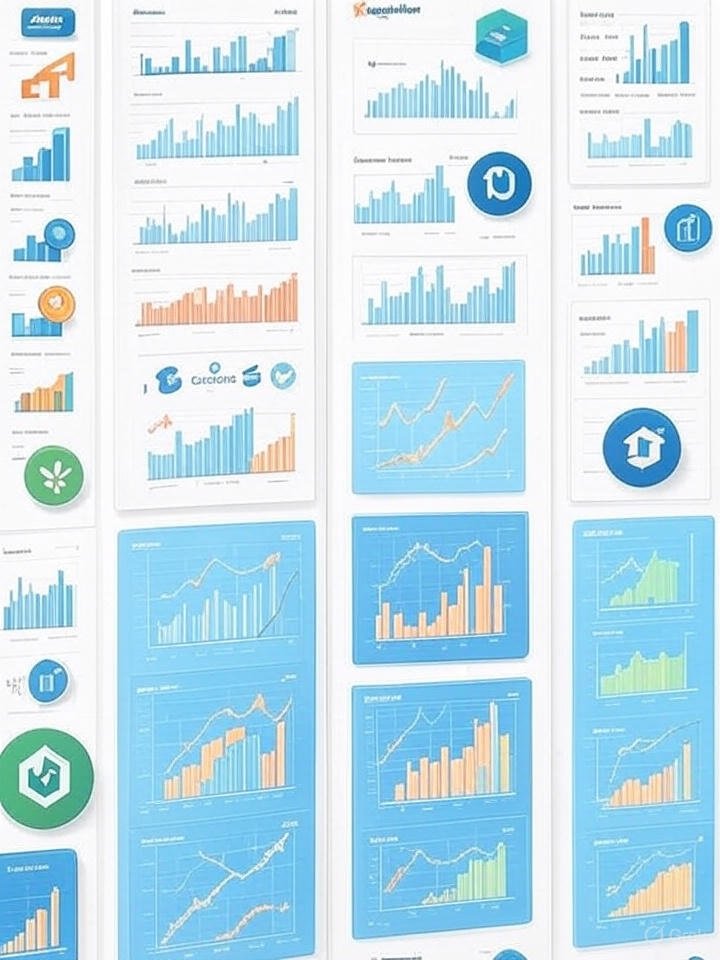Data analysis is the process of inspecting, cleaning, transforming, and modeling data to discover useful information, draw conclusions, and support decision-making. It’s a foundational practice in many fields, but especially in business, where it helps turn raw data (like sales figures, customer behavior, or market trends) into actionable insights. Think of it as detective work: you’re sifting through clues to understand what happened, why it happened, and what might happen next.
Data analysis typically involves several steps:
- Data Collection: Gathering data from sources like databases, surveys, sensors, or online interactions.
- Data Cleaning: Removing errors, duplicates, or irrelevant info to ensure accuracy.
- Exploration and Visualization: Using tools like charts, graphs, or dashboards to spot patterns (e.g., via Excel, Tableau, or Python libraries like Matplotlib).
- Modeling and Interpretation: Applying statistical methods to test hypotheses or predict outcomes.
- Reporting: Communicating findings to stakeholders.
There are different types of data analysis, each serving a unique purpose:
| Type | Description | Example in Business |
|---|---|---|
| Descriptive | Summarizes what has happened (e.g., averages, totals). | Reporting total sales for the quarter. |
| Diagnostic | Explains why something happened (e.g., root cause analysis). | Investigating why customer churn increased last month. |
| Predictive | Forecasts future trends based on historical data. | Predicting inventory needs for the next season. |
| Prescriptive | Recommends actions to achieve desired outcomes. | Suggesting optimal pricing strategies to maximize profit. |
Traditional data analysis relies on human expertise and tools like SQL for querying, R or Python for scripting, and statistical software. However, as datasets grow massive (think big data from IoT devices or social media), manual analysis becomes inefficient— that’s where AI steps in.

How AI Enhances Data Analysis
AI, particularly through machine learning (ML) and deep learning, automates and supercharges data analysis by handling complexity, speed, and scale that humans can’t manage alone. AI doesn’t replace analysts; it augments them, allowing focus on high-level strategy rather than grunt work.
Key ways AI helps:
- Automation of Routine Tasks: AI can clean data, detect anomalies, or generate visualizations automatically. For instance, tools like AutoML (e.g., Google Cloud AutoML) let non-experts build models without deep coding knowledge.
- Handling Unstructured Data: Much business data is unstructured (e.g., emails, images, videos). AI uses natural language processing (NLP) to analyze text sentiment or computer vision to interpret images, extracting insights from sources like customer reviews or security footage.
- Advanced Predictive Power: ML algorithms like random forests or neural networks learn from data patterns to make accurate forecasts. Deep learning excels in complex scenarios, such as predicting stock prices or disease outbreaks.
- Real-Time Analysis: AI enables streaming data processing (e.g., via Apache Kafka with ML models), allowing businesses to react instantly to events like fraud attempts.
- Personalization and Optimization: Reinforcement learning (a type of AI) can test and refine strategies, like A/B testing at scale for website layouts.
AI tools commonly used include:
- TensorFlow or PyTorch for building models.
- Platforms like IBM Watson or AWS SageMaker for end-to-end AI-driven analysis.
- Generative AI (e.g., models like GPT) for summarizing reports or generating hypotheses.

How AI-Propelled Data Analysis Drives Business Growth
By integrating AI into data analysis, businesses can unlock efficiencies, innovate, and gain competitive edges. Here’s how it propels them forward, with real-world examples:
- Improved Decision-Making: AI analyzes vast datasets quickly, providing insights that lead to smarter choices. For retail giants like Amazon, AI-driven analysis of purchase history enables personalized recommendations, boosting sales by up to 35% in some cases.
- Cost Reduction and Efficiency: Predictive maintenance in manufacturing (e.g., using AI on sensor data) anticipates equipment failures, reducing downtime. Companies like GE have saved millions by preventing breakdowns.
- Enhanced Customer Experience: AI analyzes customer data for segmentation and sentiment. Netflix uses ML to analyze viewing habits, recommending content that keeps users engaged and reduces churn.
- Revenue Growth through Innovation: In finance, AI detects fraud patterns in transaction data (e.g., via anomaly detection algorithms), saving banks billions. JPMorgan Chase employs AI for risk assessment, enabling faster loan approvals and new revenue streams.
- Supply Chain Optimization: AI forecasts demand and optimizes routes. Walmart uses AI to analyze weather, events, and sales data for inventory management, minimizing stockouts and waste.
- Marketing and Sales Boost: AI-powered tools like predictive lead scoring (e.g., in HubSpot) analyze prospect behavior to prioritize high-value leads, increasing conversion rates.
To get started, businesses should:
- Invest in data infrastructure (e.g., cloud storage).
- Build or hire AI talent.
- Start small with pilot projects, like using free tools such as Google Analytics with AI extensions.
- Ensure ethical AI use, focusing on data privacy (e.g., GDPR compliance) to build trust.
In summary, data analysis is the engine of informed business strategy, and AI is the turbocharger that makes it faster, smarter, and more scalable. To apply AI-Driven data analysis solution to your business or other custom solutions contact us today.
